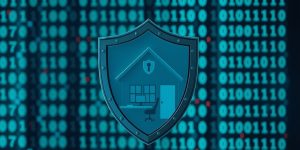Small businesses are frequently targeted by cybercriminals, facing threats such as phishing attacks, ransomware, malware, and data breaches. These cyber threats can lead to financial losses, damage to reputation, and potential legal consequences. In this article, we will explore practical steps and measures that small businesses can take to safeguard their websites from cyber threats. By implementing robust security measures, educating employees on cybersecurity best practices, developing a response plan for cyber incidents, and maintaining regular backups and recovery procedures, small businesses can enhance their cybersecurity and protect their digital assets.
Key Takeaways
- Regularly update and patch software to protect against known vulnerabilities.
- Use firewalls and antivirus protection to filter network traffic and detect/remove malicious software.
- Implement secure access controls and strong password policies to protect sensitive data.
- Train employees on recognizing phishing attempts and safe internet use.
- Maintain regular backups and recovery procedures to safeguard important data.
Understanding Cyber Threats to Small Business Websites
Identifying Common Cyber Threats
Understanding the Cyber Threat Landscape
In order to develop an effective cybersecurity strategy, it’s essential for small business owners to first understand the nature and variety of cyber threats they may face. The digital landscape is rife with various forms of cyber attacks, each posing unique challenges and risks.
-
Phishing Attacks: One of the most common cyber threats, phishing involves deceptive emails or messages designed to trick individuals into revealing sensitive information, such as login credentials or financial details. These attacks often appear as legitimate communication from trusted sources, making them particularly dangerous.
-
Ransomware: This type of malware encrypts a victim’s data, rendering it inaccessible, and demands a ransom for its release.
Tip: Implement comprehensive training programs for your staff to enhance their cyber awareness and to help them recognize phishing attempts and social engineering tactics.
Assessing the Impact of Cyber Threats on Small Businesses
Small businesses are particularly vulnerable to cyber threats, which can result in significant financial losses, damage to reputation, and legal consequences. Studies have shown that over 60% of cyberattacks are directed at small to medium-sized businesses. Common threats faced by small businesses include phishing attacks, ransomware, malware, and data breaches. To illustrate the severity of these threats, consider the following statistics:
| Threat Type | Frequency |
|---|---|
| Phishing Attacks | High |
| Ransomware | Increasing |
| Malware | Common |
| Data Breaches | Damaging |
It’s essential for small businesses to prioritize cybersecurity measures to mitigate these risks. As a tip, regular training on recognizing and responding to these threats is crucial for all employees.
Implementing Robust Security Measures
Choosing the Right Security Software
When it comes to choosing the right security software for your small business website, it is crucial to prioritize regular software updates and patch management. Keeping your operating systems, applications, and security software updated is essential to protect against known vulnerabilities. Additionally, implementing a firewall to filter network traffic and using antivirus protection to detect and remove malicious software are fundamental measures. Continuously monitoring systems for unusual activity and having an incident response plan ready for potential breaches is also imperative. Strong authentication and access control, including the use of strong passwords and multi-factor authentication (MFA), is highly recommended. Encouraging complex, unique passwords and adding an extra security layer with MFA can significantly enhance security. Limiting user access by applying the principle of least privilege is another important aspect to consider. It is also advisable to update security plugins regularly and to carefully select firewalls and plugins based on your unique needs. Finally, it is crucial to update security plugins and ensure that websites and antivirus software are up to date.
Establishing Secure Access Controls
When establishing secure access controls, it is crucial to implement strong measures to control and manage access to your systems. Utilize role-based access controls to ensure that users have appropriate levels of access. Regularly review and update access permissions to limit potential vulnerabilities arising from unauthorized access.
- Implement a table for presenting structured, quantitative data. Ensure it’s succinct and formatted correctly in Markdown.
- Use a bulleted or numbered list for less structured content, like steps, qualitative points, or a series of related items.
It is important to regularly review and update access permissions to limit potential vulnerabilities arising from unauthorized access.
Educating Employees on Cybersecurity Best Practices
Training Staff on Recognizing Phishing Attempts
Phishing and other social engineering techniques remain a top threat, as highlighted by the U.K.’s National Cyber Strategy and the Cyber Security Breaches Survey. This underlines the urgent need for organizations to prioritize employee cyber awareness training and proactive initiatives. Implement comprehensive training programs for your staff to enhance their cyber awareness and to help them recognize phishing attempts and social engineering tactics. Regular training sessions can empower employees to act as a proactive line of defense against potential cyber threats. Software and System Updates: Regularly update all software and systems to ensure that security patches and updates are applied promptly. Implementing automatic updates and monitoring software vendors for the latest security releases is essential to maintain a robust defense against evolving cyber threats. In your training, emphasize that the most significant risk comes from criminals trying to trick your employees into doing something, rather than from people hacking into the company’s Wi-Fi. The key is to teach them the signs to look for and, when something seems wrong, what they need to do about it. Monitor how your staff does post-training, and encourage managers to stay vigilant for any signs of social engineering attempts to obtain sensitive information. Perpetrators gather background information on their targets and exploit trust to breach security protocols. Employee training programs, simulated phishing exercises, and robust security awareness campaigns are essential components of a comprehensive defense strategy against social engineering attacks.
Creating Strong Password Policies
Although it is possible to delve into highly technical intricacies when discussing cybersecurity services, there are times when the most fundamental components hold the greatest significance. This could involve promoting the adoption of robust password policies and the utilization of multi-factor authentication. Because login credentials serve as the entry point to an organization’s systems, anyone can gain access to them if they are simple to assume. Implement policies to mandate the use of robust passwords and multi-factor authentication. Here are some important tips to consider:
- Encourage complex, unique passwords that include a combination of uppercase and lowercase letters, numbers, and special characters.
- Use free password managers such as Dashlane to control and manage passwords on various devices.
- Strengthen website security with two-factor authentication (2FA) that works with two kinds of structures to block malicious hacking attempts.
- Use a password manager, such as Nordpass, to generate and store passwords securely.
Implementing these measures will significantly enhance the security of user accounts and protect sensitive information from unauthorized access. It’s crucial to advocate for the use of robust passwords and multi-factor authentication to safeguard small business websites from cyber threats.
Developing a Response Plan for Cyber Incidents
Creating a Cyber Incident Response Team
After creating a Cyber Incident Response Team, it is crucial to develop a comprehensive emergency management plan. This plan should include the process for reporting a cyber security incident, communication strategies for informing employees and customers about the incident, and protocols for managing business operations during a cyber security incident. Additionally, consider obtaining cyber security insurance to mitigate the costs associated with cyber-attacks. A well-structured emergency management plan can significantly reduce the impact of a cyber-attack and provide a clear course of action in response to a cyber security incident.
Conducting Regular Security Audits
Regular security audits are essential for identifying vulnerabilities and ensuring the effectiveness of security measures. These audits involve a comprehensive review of the website’s security protocols, access controls, and incident response procedures. It’s important to carry out regular vulnerability scanning using approved tools to identify and prioritize potential threats. Additionally, consider implementing structured training programs for staff to enhance their cyber awareness and recognize phishing attempts and social engineering tactics. Finally, ensure that software and system updates are performed regularly to apply security patches and updates promptly, maintaining a robust defense against evolving cyber threats.
Maintaining Regular Backups and Recovery Procedures
Implementing Automated Backup Solutions
Backups are a critical aspect of safeguarding your website from cyber threats. Regular backups ensure that you can recover your site quickly and minimize the damage and downtime caused by a security incident. It’s recommended to perform backups regularly, preferably daily, and store them in a secure location, such as a cloud service, an external hard drive, or a remote server. Additionally, consider adding multi-factor authentication (MFA) to enhance the security of user accounts. MFA requires users to provide more than one piece of evidence to verify their identity before accessing your website or e-commerce platform, significantly reducing the risk of unauthorized access. Leveraging a comprehensive cybersecurity solution, such as Acronis Cyber Protect Cloud, can provide advanced backup, disaster recovery, file sync and share, and Data Loss Prevention (DLP) capabilities to ensure a well-rounded cyber protection strategy. For smaller websites, hosting providers often offer automated backup solutions, while larger websites may opt for cloud storage. Implementing a web application firewall is also crucial to filter malicious HTTP traffic and prevent unauthorized data from escaping the application. Endpoint protection solutions and robust data backup strategies are essential for safeguarding individual devices and critical data against cyber threats.
Testing Data Recovery Processes
Regularly backing up critical data is crucial to safeguard against data loss in the event of a cyberattack or system failure. It is difficult to overstate the significance of data backups. By implementing automated backup solutions and testing data recovery processes, businesses can ensure swift recovery and minimize the impact of potential data breaches or ransomware attacks.
Access Control: Control and manage access to your systems by implementing strong access control measures. Utilize role-based access controls to ensure that users have appropriate levels of access. Regularly review and update access permissions to limit potential vulnerabilities arising.
Protect Your Network: Network security is a fundamental aspect of cybersecurity. Implement robust security measures to protect your network from unauthorized access and potential threats. Regularly monitor and update network security protocols to stay ahead of emerging cyber threats.
Tip: Regularly back up critical data and ensure that backup systems are secure and accessible. This proactive measure enables swift recovery and minimizes the impact of potential data breaches or ransomware attacks.
Maintaining regular backups and recovery procedures is crucial for the security and stability of your business website. At WebsiteSecurity.net, we understand the importance of protecting your online assets. Our experts specialize in web protection, backups, monitoring, and more. With our unbeatable website security solutions, you can have peace of mind knowing that your website is safe and secure. Visit WebsiteSecurity.net today to learn more about our comprehensive security services.
Conclusion
In conclusion, safeguarding small business websites from cyber threats is crucial for protecting sensitive data, maintaining customer trust, and ensuring business resilience. By implementing a combination of foundational cybersecurity practices, small businesses can create a comprehensive defense against various cyber threats. These measures not only safeguard digital assets but also contribute to building customer trust and business resilience. Additionally, investing in reliable security solutions and cyber liability insurance can further strengthen the cybersecurity posture of small businesses. It is imperative for small businesses to integrate cybersecurity into their organizational culture and stay ahead of evolving cyber threats to mitigate potential risks and ensure long-term success.







